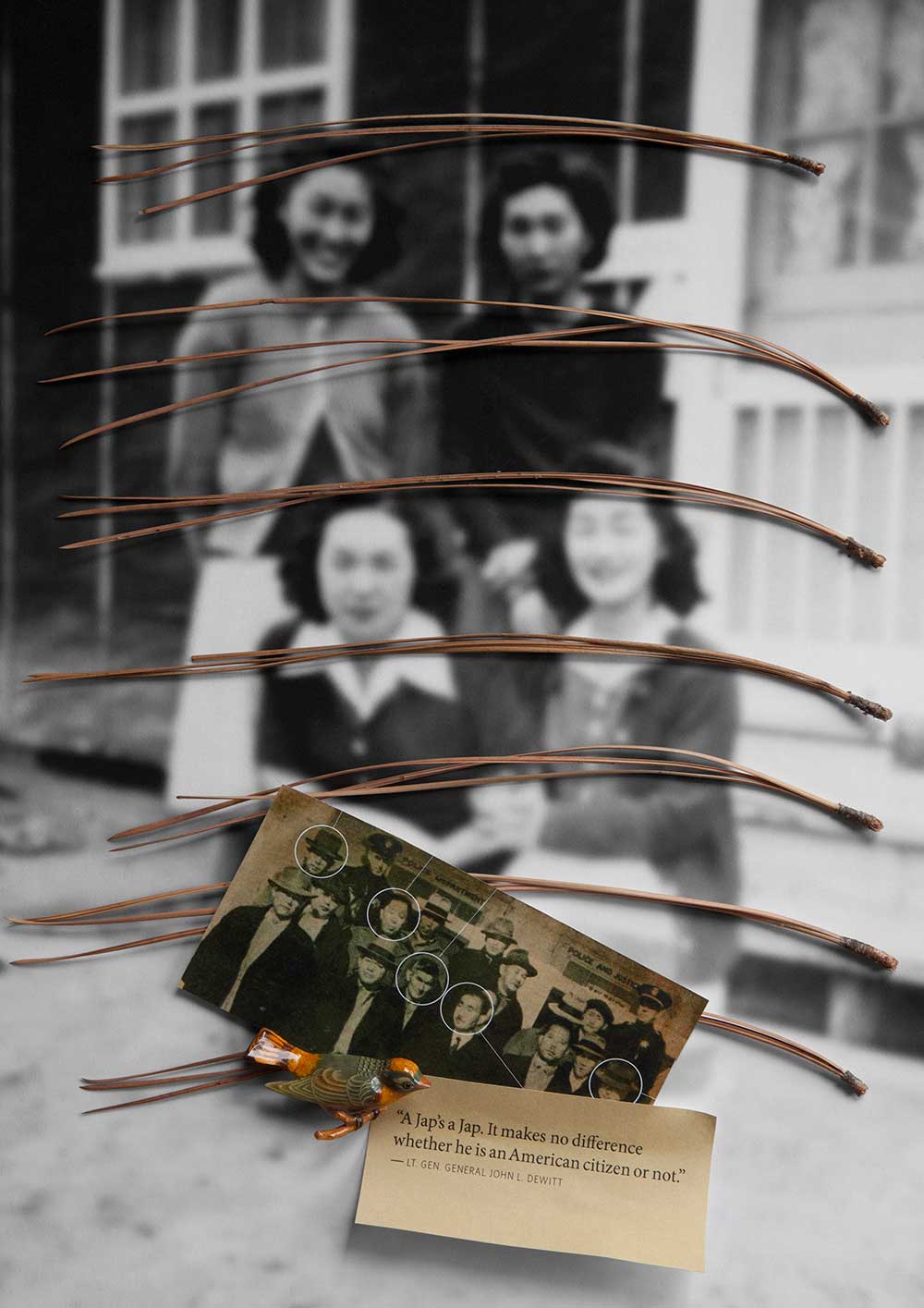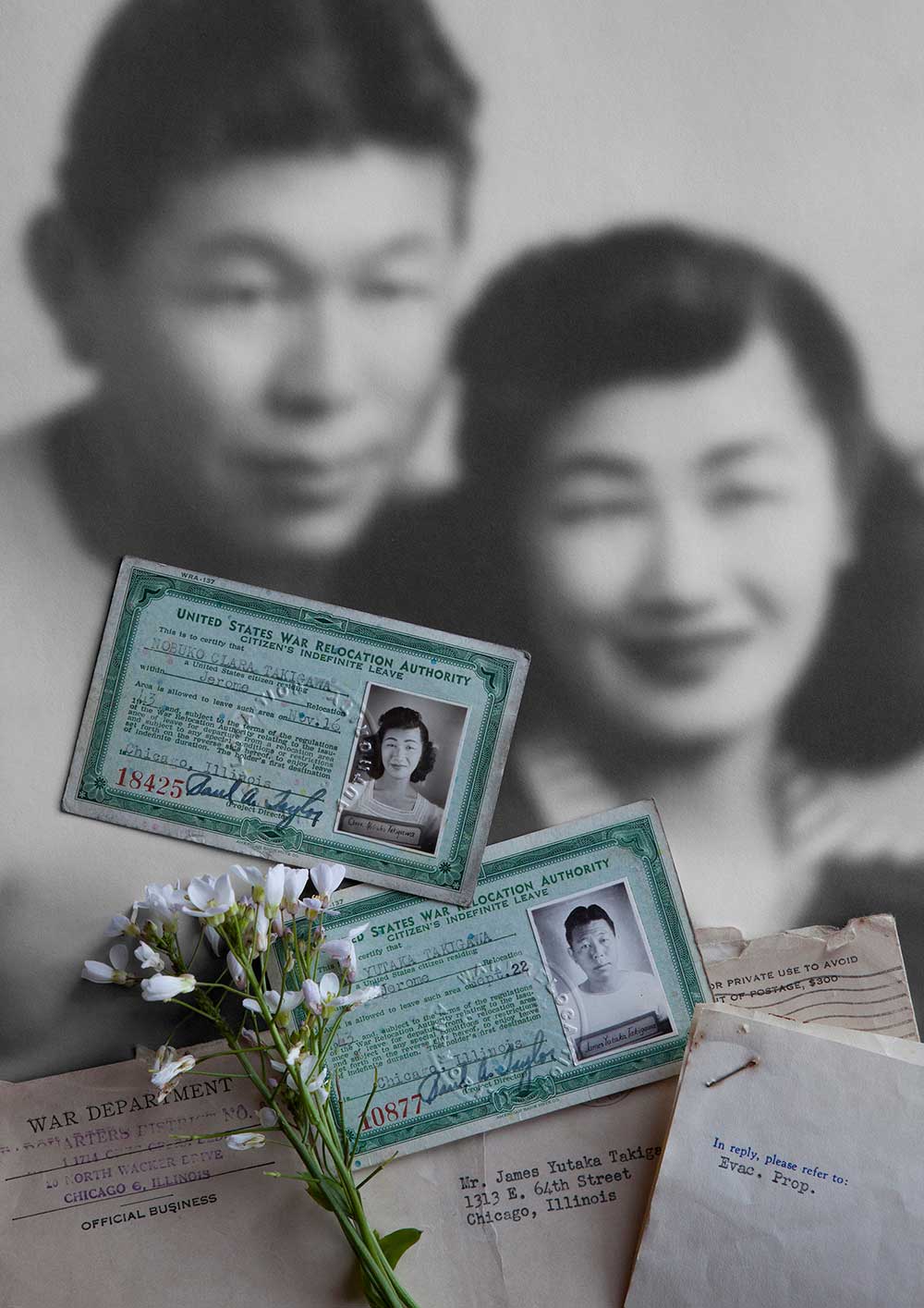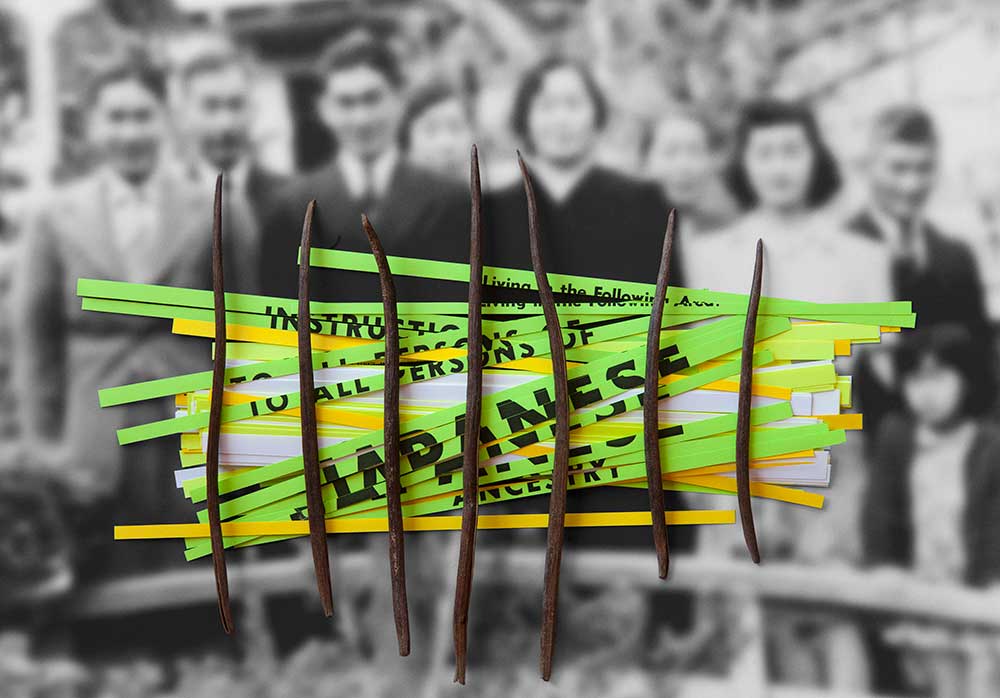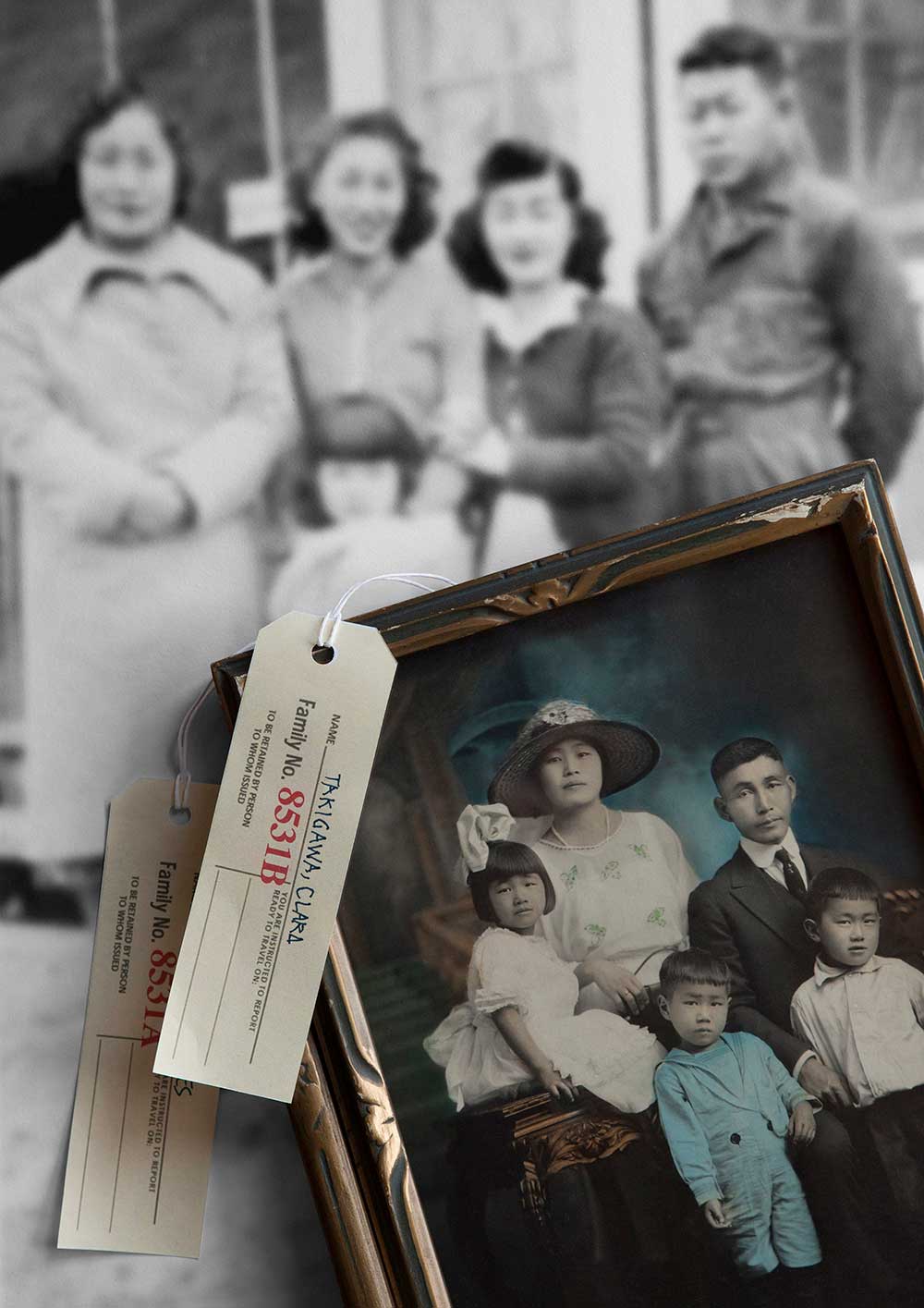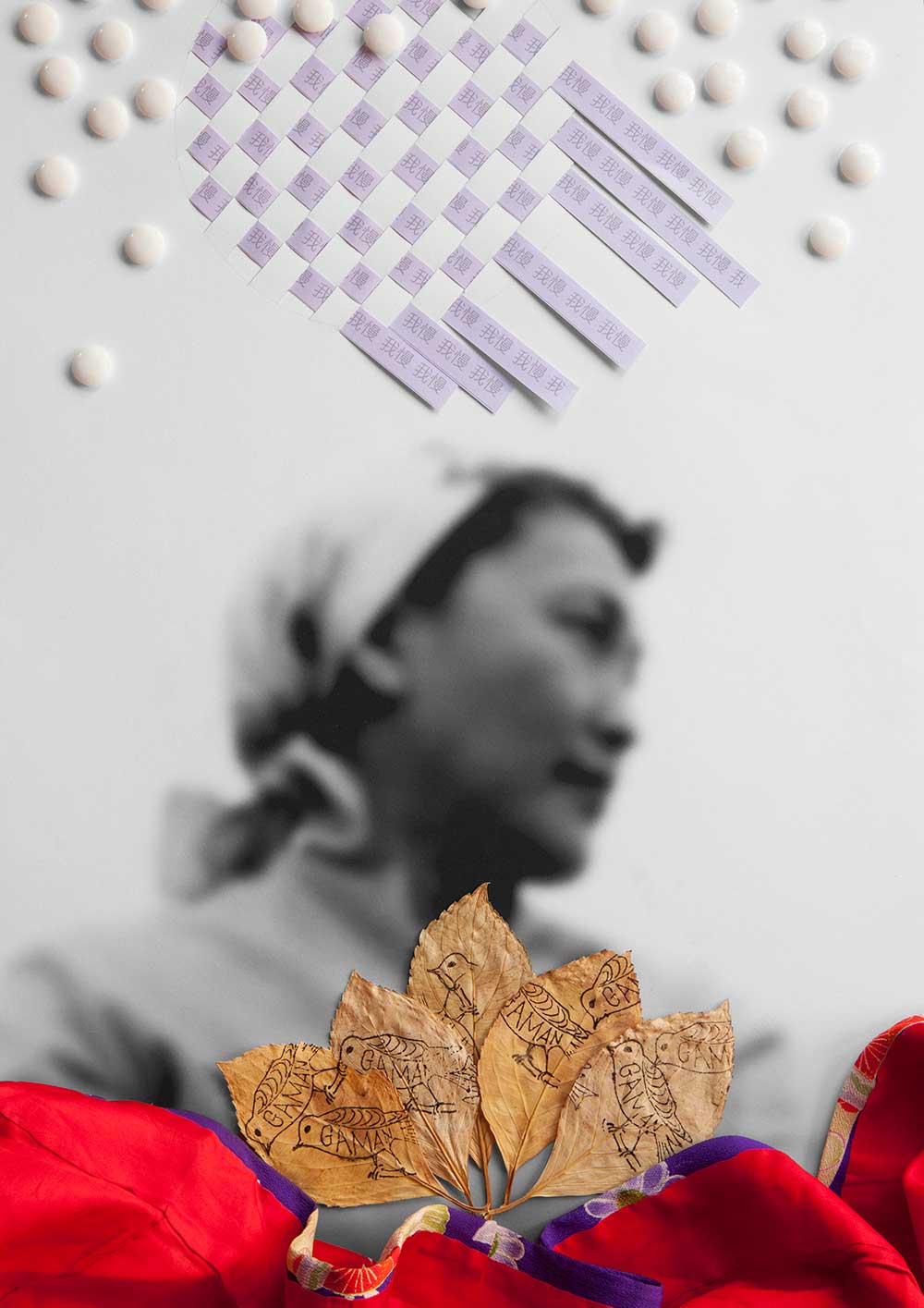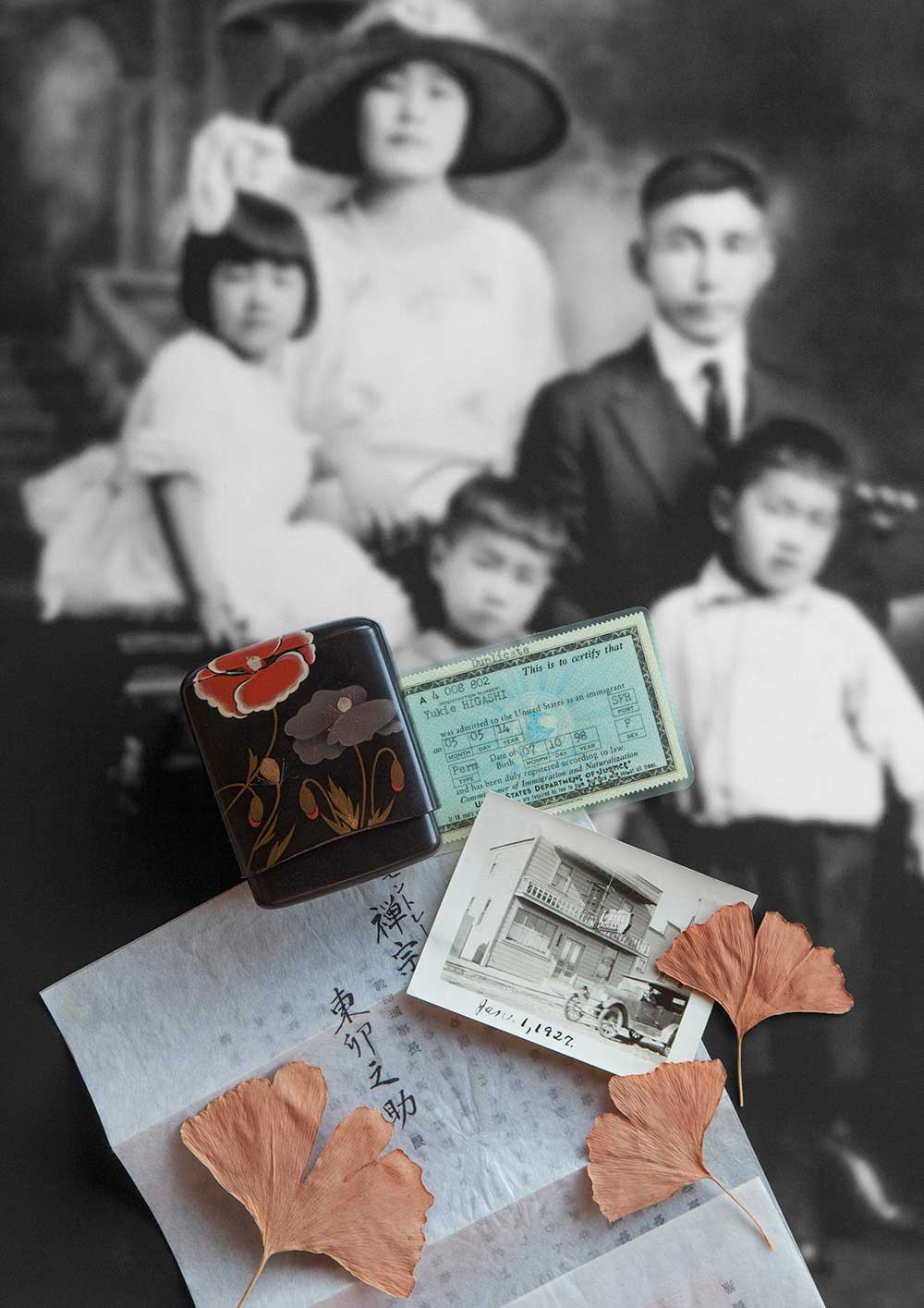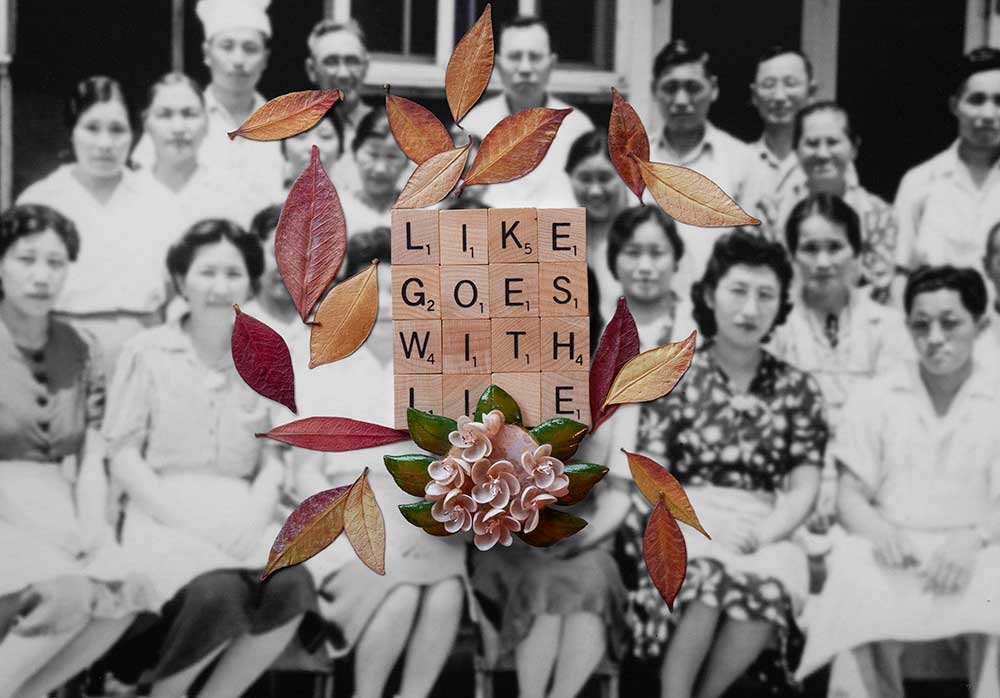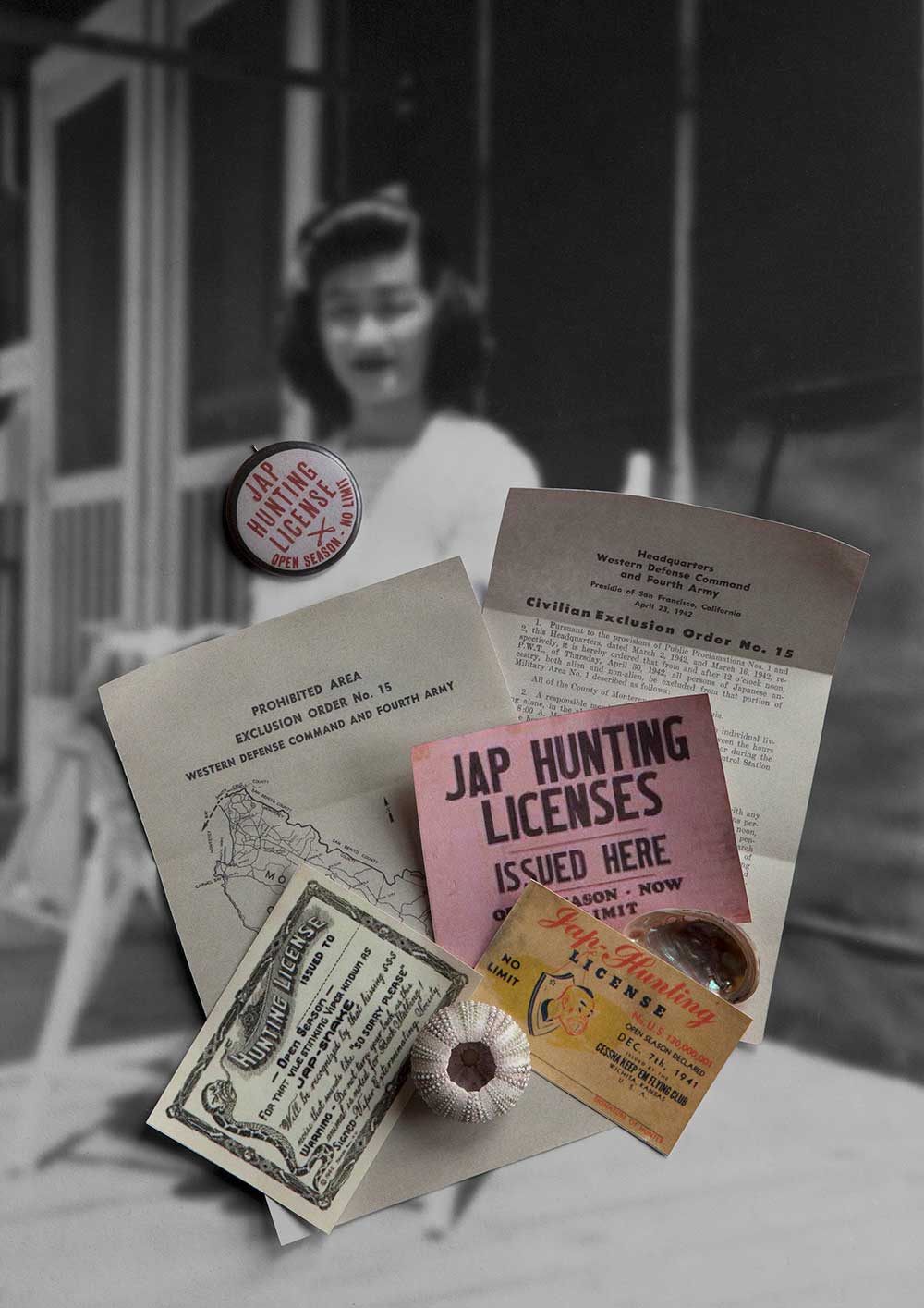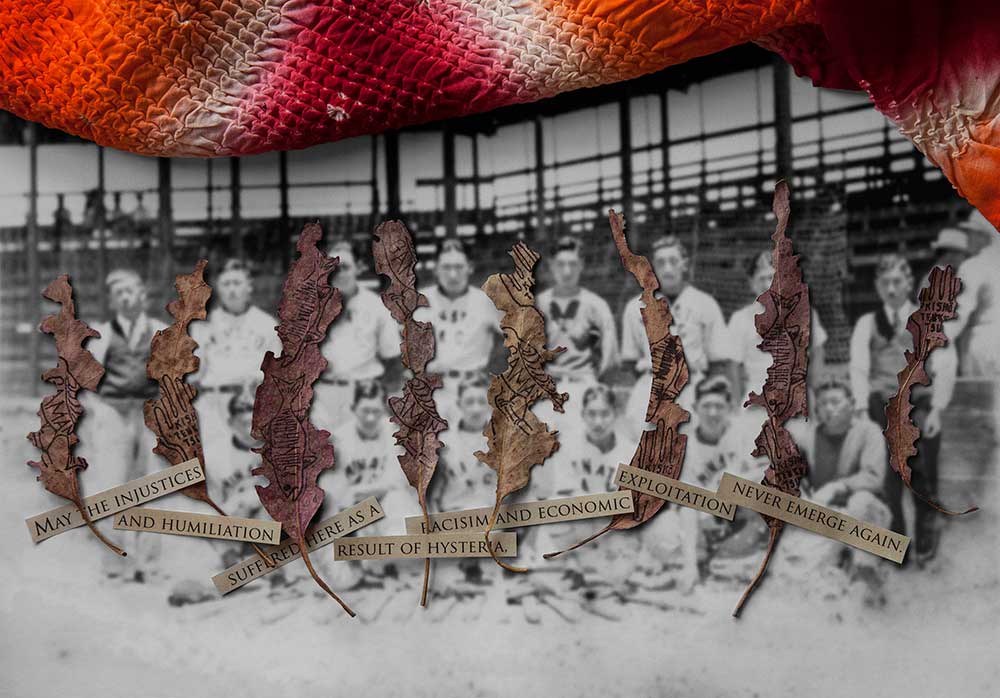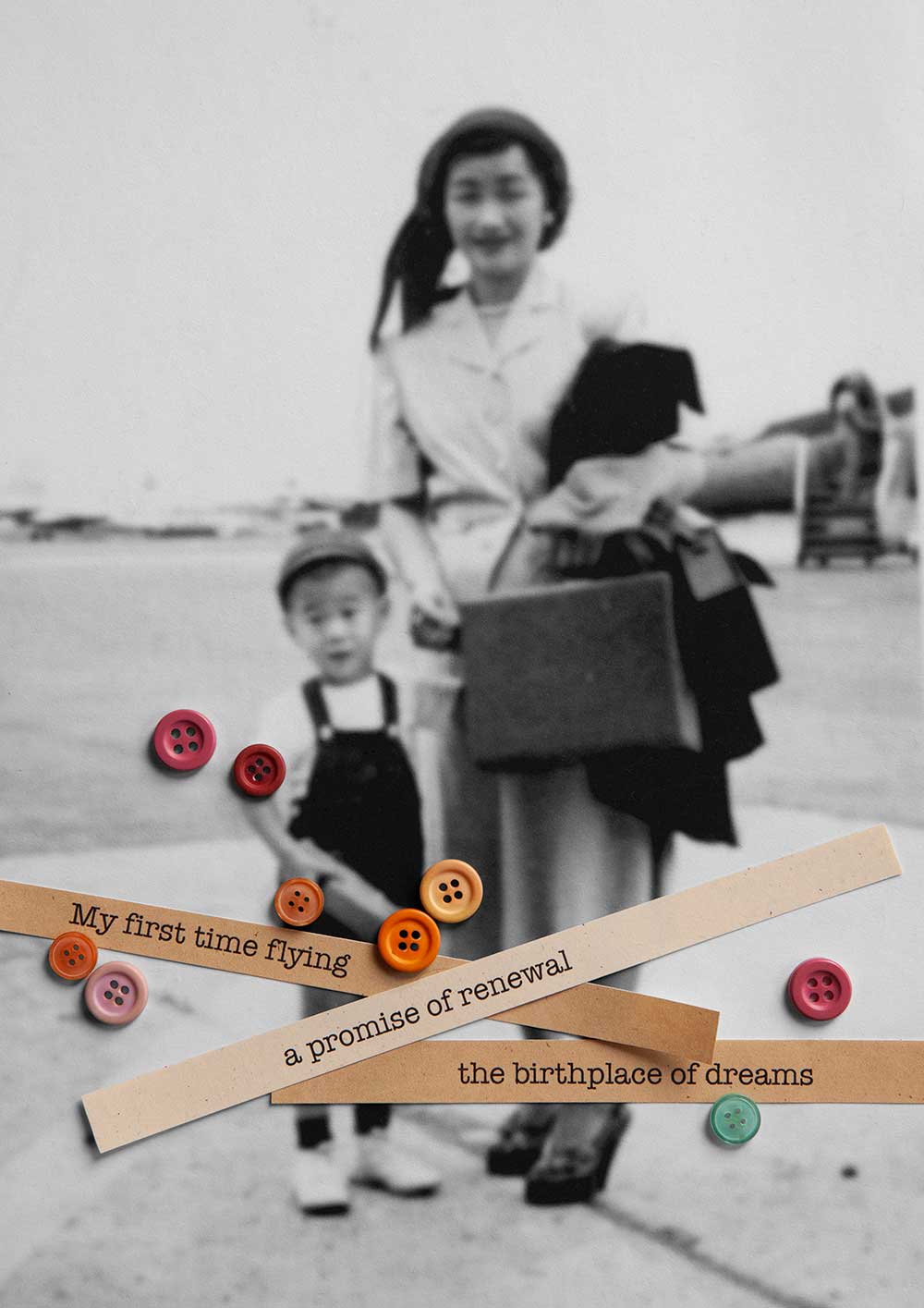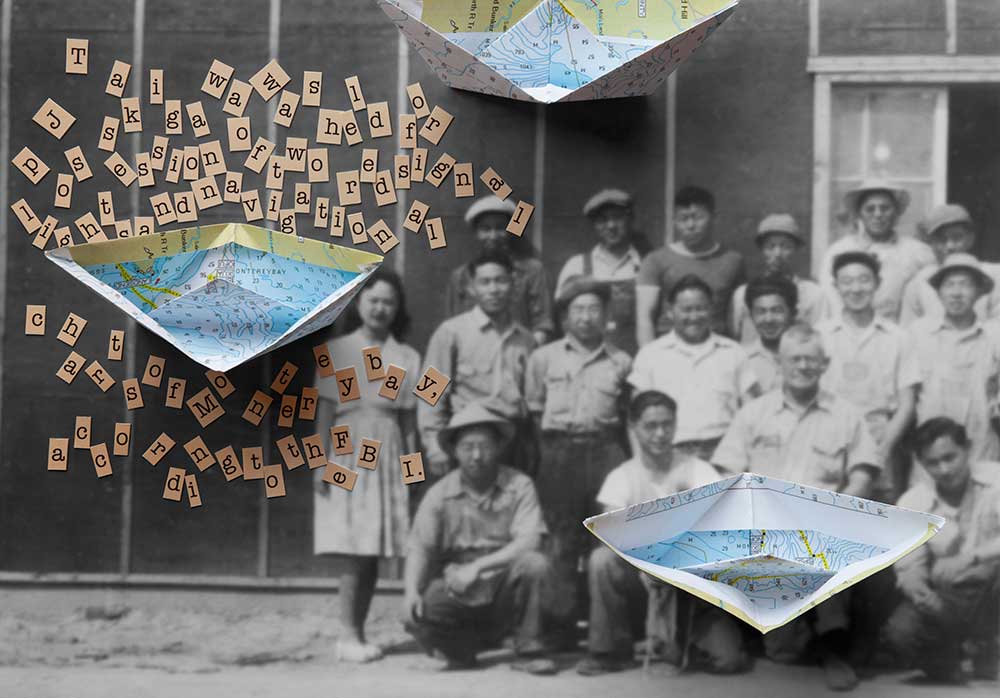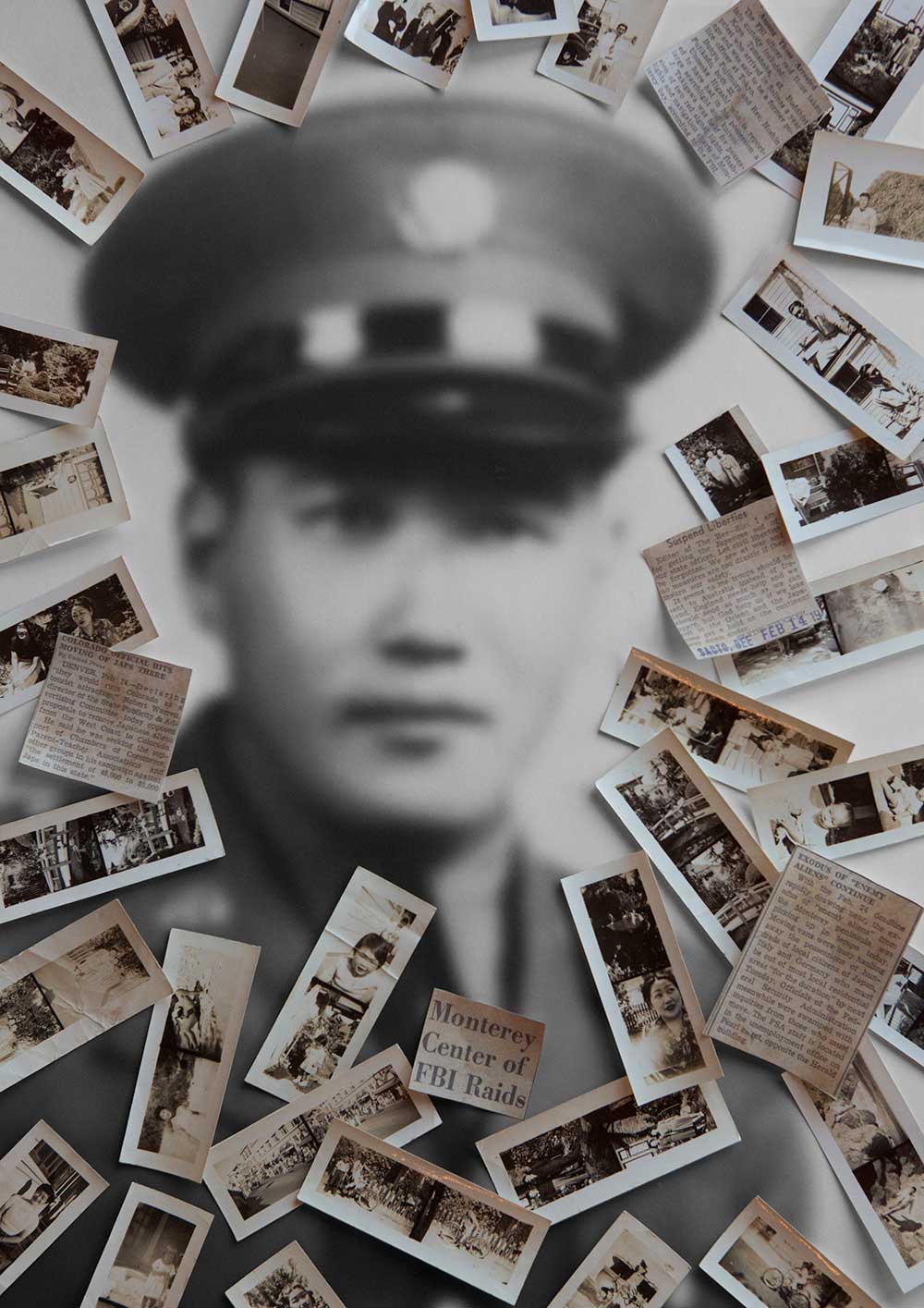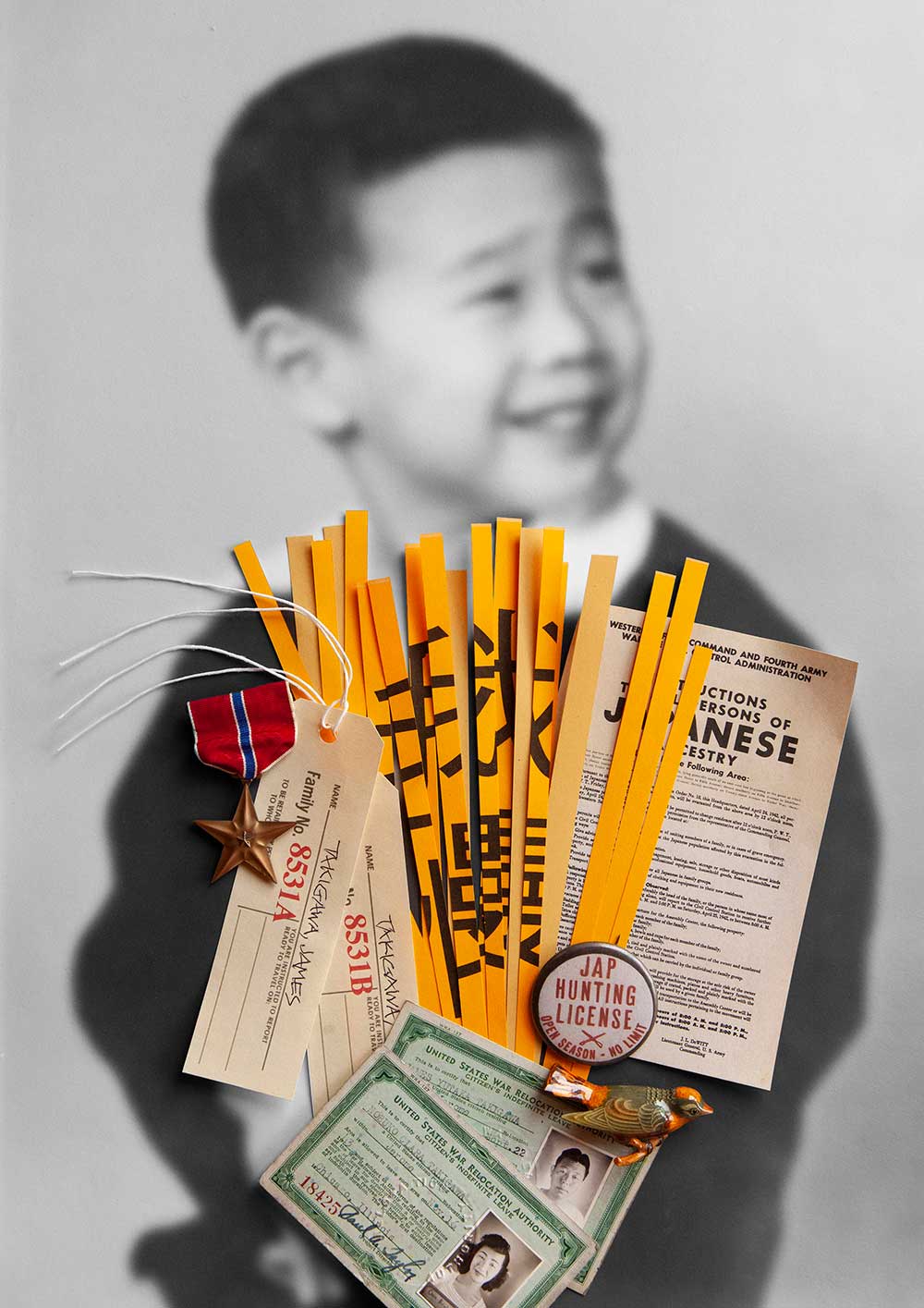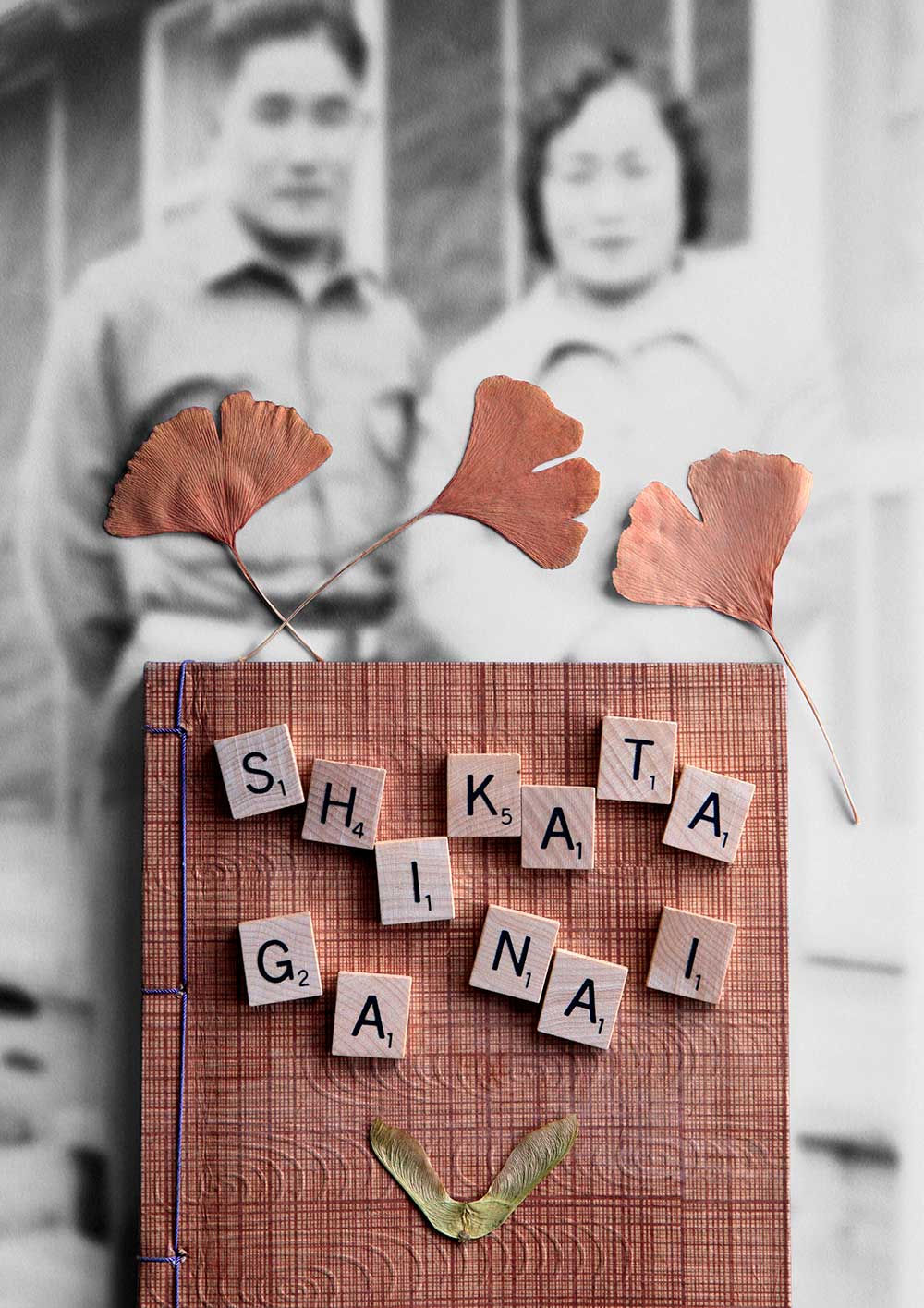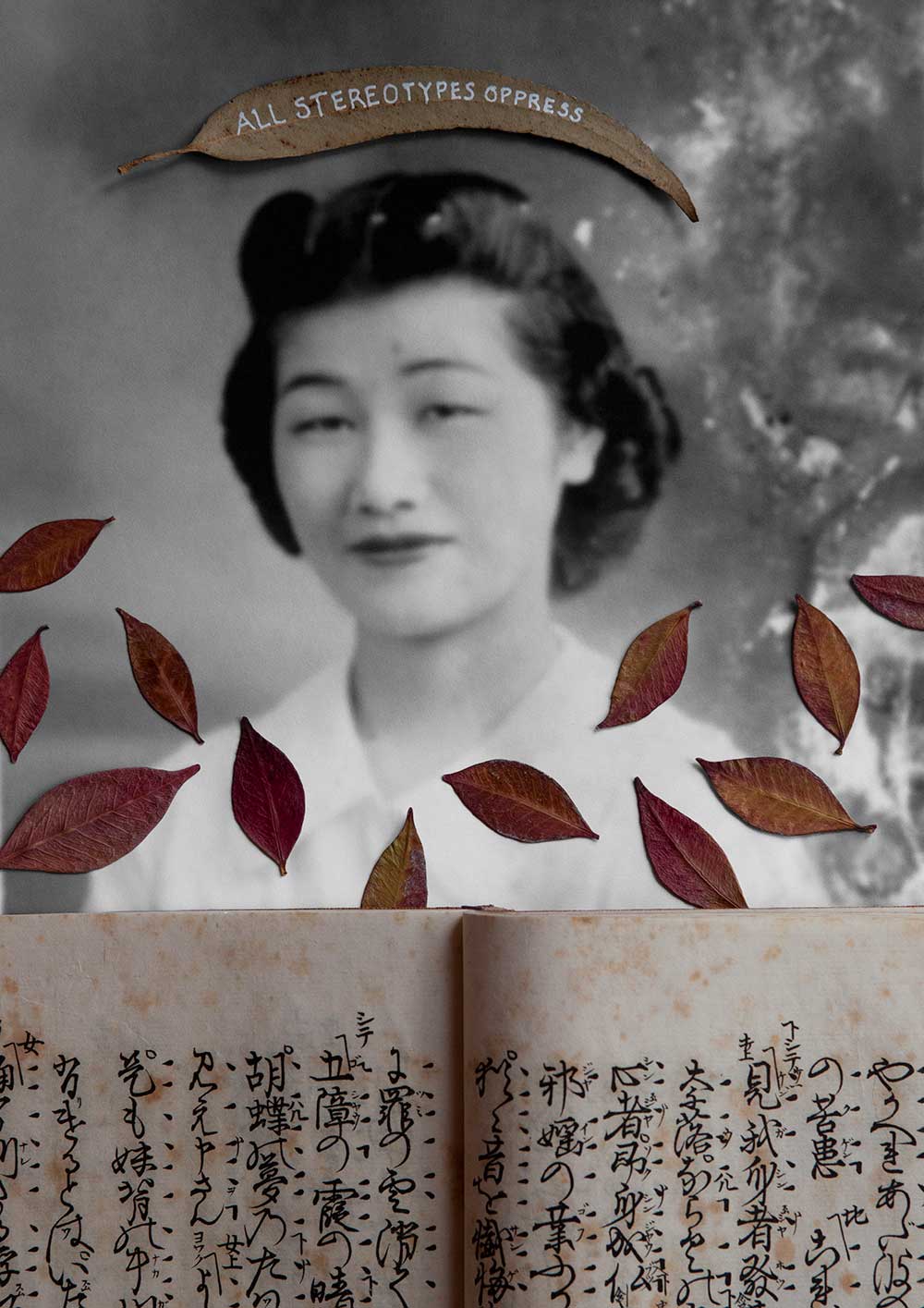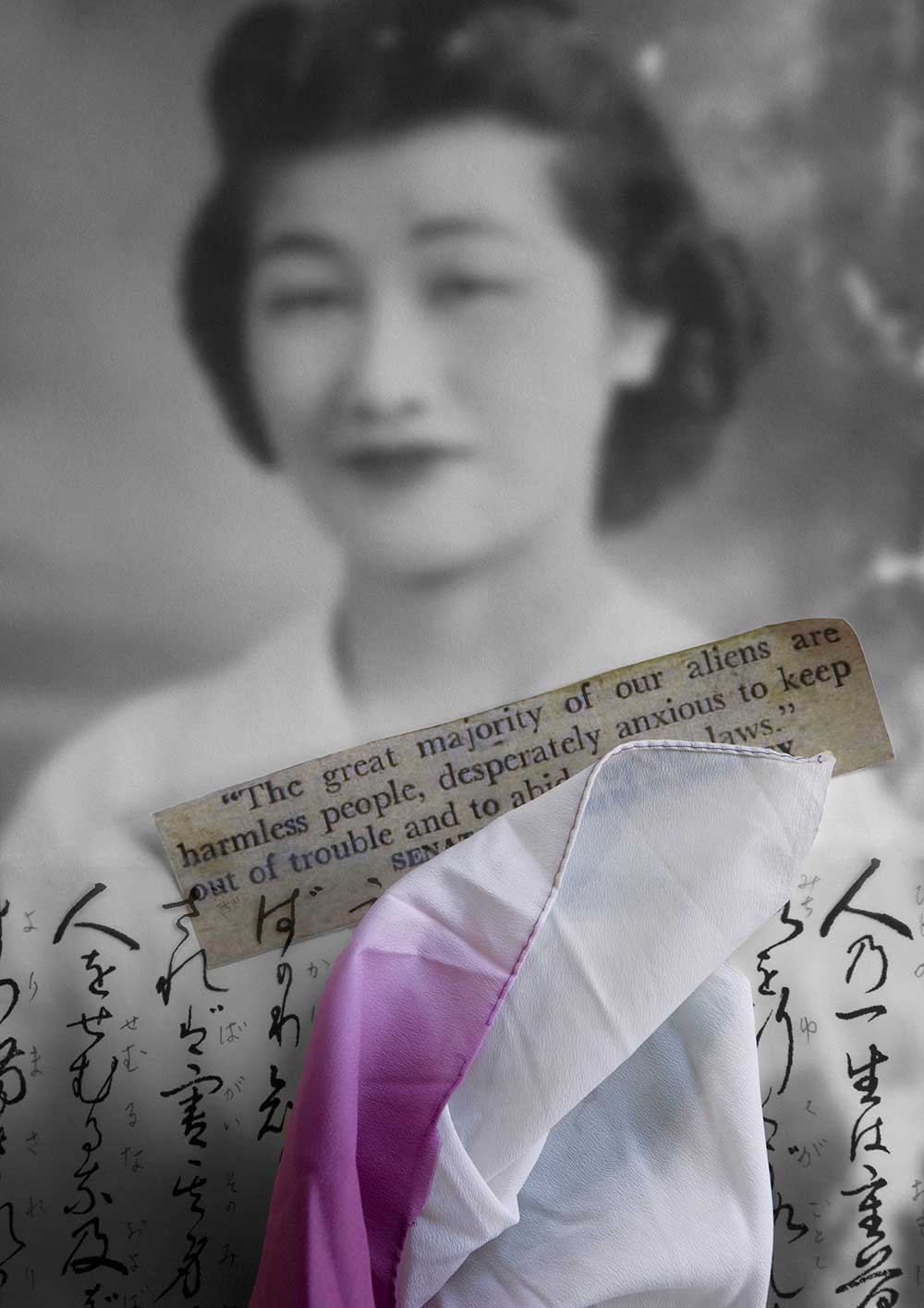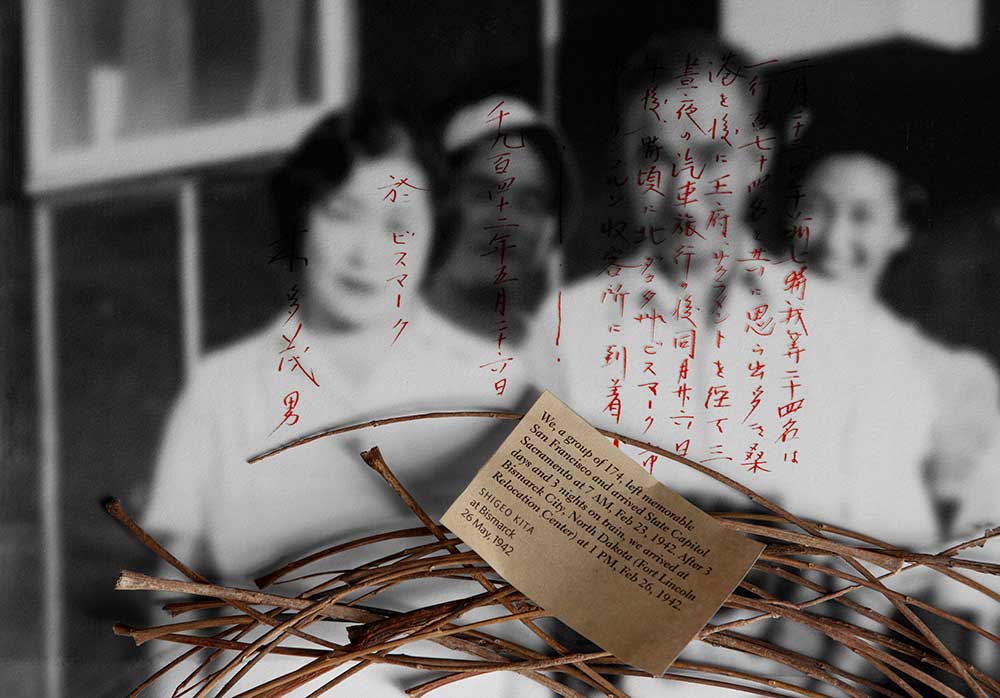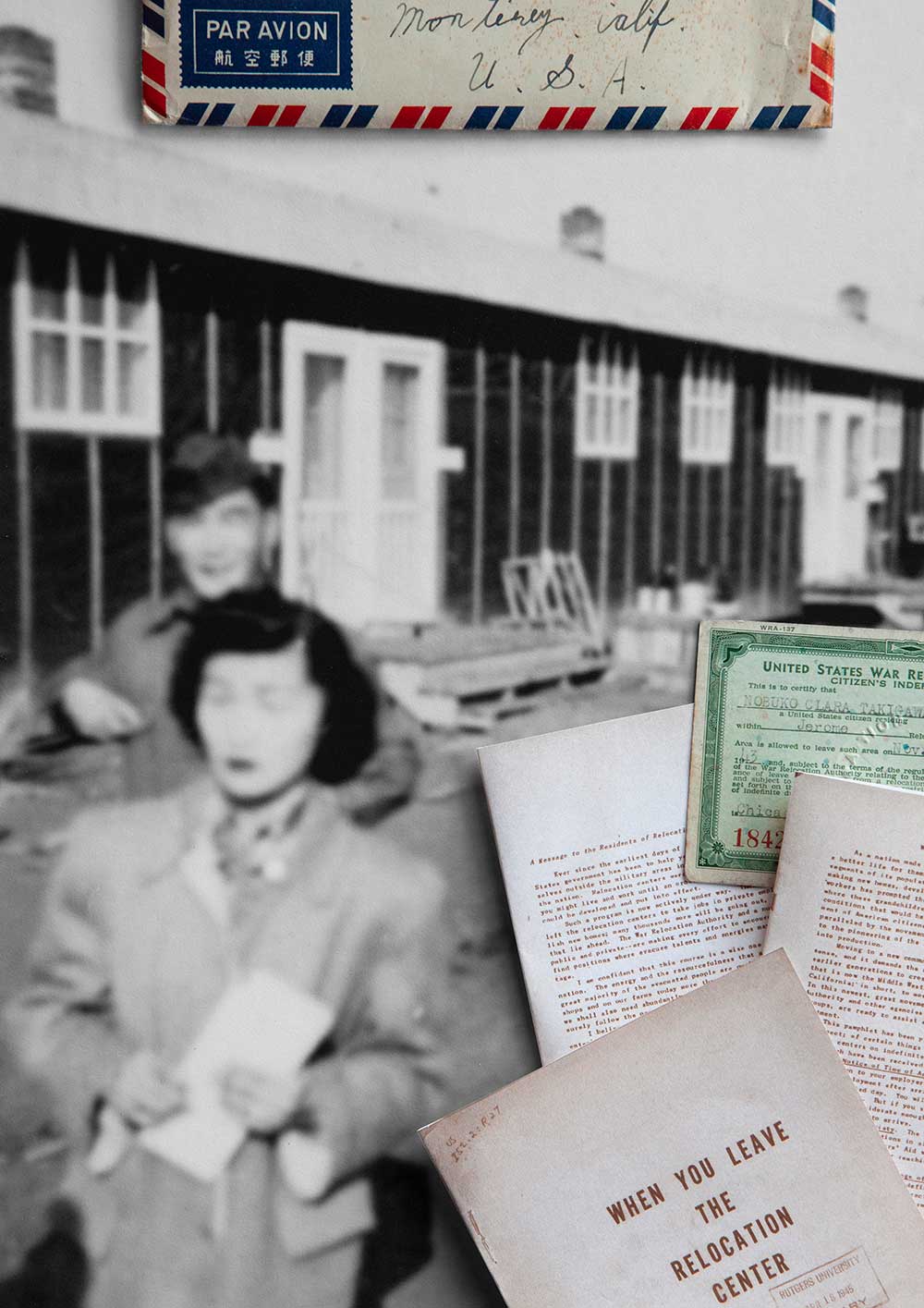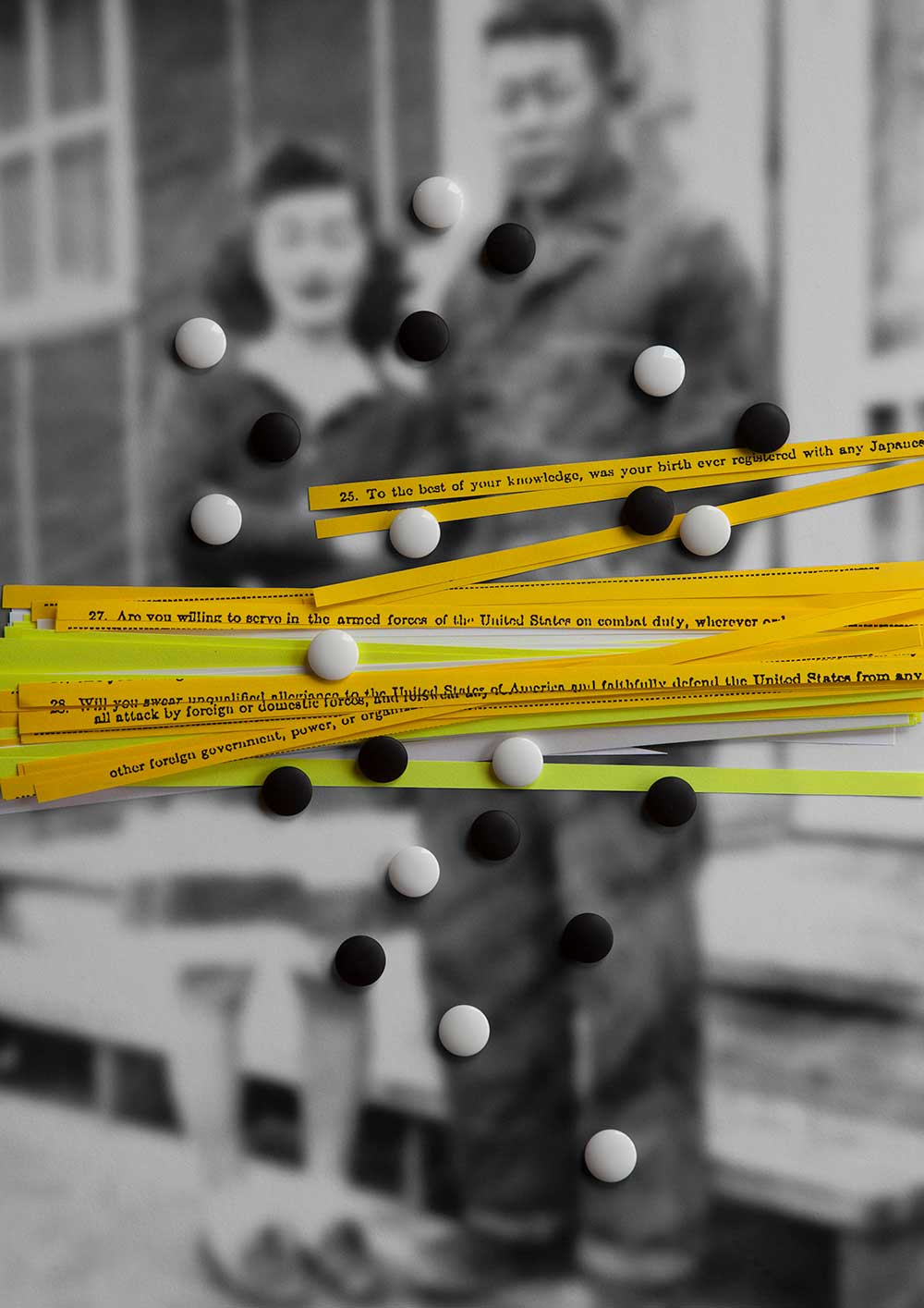Jerry Takigawa’s Balancing Cultures, is an award-winning photography series about the artist’s family’s experience, before, during, and after the WWII American concentration camps.
Awakened by a discovery of old family photographs taken in an Arkansas concentration camp, Takigawa was compelled to speak out in contrast to his parents’ fearful silence on the matter. He created a visual journey through collaged photographs using artifacts, documents, and memories, resulting in a distinctive telling of one family’s journey from immigration to incarceration, and re-assimilation. The stories contained in his narrative humanize the historical record. Takigawa gives voice to the story his family kept hidden through a unique Japanese practice known as “gaman” (enduring the seemingly unbearable with patience and dignity). The process of researching and creating these images informed and augmented Takigawa’s understanding of what happened in the past—and of human rights abuses today.
These personal images are an expression of the misjudgments and injustices that result from hysteria, racism, and economic exploitation. As a third-generation Japanese American born after the camps, Takigawa was spared bitterness by the gift of his family’s silence about these injustices. But his family’s silence betrayed the gravity of the legacy he inherited. For the first time, he felt the shame, anger, and fear his family experienced. The title, Balancing Cultures, stems from his struggle to reconcile Japanese and American cultural attributes. Growing up, he was admonished to “be American”—concurrently, Japanese values were instilled. This project is an effort to make this paradox whole as well as give voice to his ancestor’s feelings.
Decades have passed since Executive Order 9066 was enacted. Many Americans are only now learning of this travesty. There is no scientific basis for race; race and racism are social constructs. Balancing Cultures recalls a dark chapter in American history—censored in part by the victims’ fear that if their voices were too loud it could happen again, and America’s propensity to evade historical accountability. Takigawa says, “I raise my voice today because it is happening again. Today, we see renewed violence against Asian Americans and Balancing Cultures is a reminder that what underpins the grave social, political, and environmental landscape we face today is racism, hysteria, and economic exploitation. If silence sanctions, communication is resistance.”
About Jerry Takigawa
Jerry Takigawa is an independent photographer, designer, curator, and writer. He is the creative force behind the Center for Photographic Art’s PIE Labs creativity workshop. Takigawa is a recipient of many honors including the Imogen Cunningham Award, the Clarence J. Laughlin Award, CENTER’s Curator’s Choice Award, the Rhonda Wilson Award, the Foto Forum Santa Fe Photography Award, and LensCulture Critic’s Choice Award Top 10. Exhibited internationally, his work is in the permanent collections of the San Francisco Museum of Modern Art, the Museum of Fine Arts Boston, the Brooklyn Museum, the Crocker Art Museum, the Santa Barbara Museum of Art, the Library of Congress, the Japanese American Museum of Oregon, and the Monterey Museum of Art. He studied photography with Don Worth at San Francisco State University and received a degree in art with an emphasis in painting. His monograph, Balancing Cultures, was published by Dayo Press in 2021. Takigawa lives and works in Carmel Valley, California. [Official Website]



